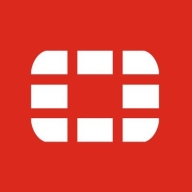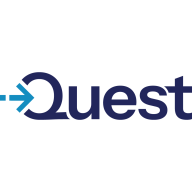

KACE Systems Management Appliance and Fortinet FortiClient compete in the network management and endpoint security category. KACE SMA has the upper hand in comprehensive asset management, while Fortinet FortiClient excels in integration with existing infrastructure.
Features: KACE SMA offers modular deployment, automation capabilities, and single-pane control for endpoint management, along with comprehensive asset management and scripting features. Fortinet FortiClient provides strong VPN and endpoint security integration, mentioning features like web filtering, anti-malware, and application control, which help in protecting environments tied with existing Fortinet infrastructures.
Room for Improvement: KACE SMA needs to improve scalability, especially beyond certain endpoints, and enhance its patch management and reporting intuitiveness. Fortinet FortiClient could benefit from user interface enhancements and advanced features such as multifactor authentication and more effective vulnerability categorization, alongside improved support and update consistency.
Ease of Deployment and Customer Service: KACE SMA is known for reliable technical support, especially with its Premier Support service, thriving in on-premises setups. Fortinet FortiClient offers varied deployment options, including seamless cloud integration, supported by Fortinet's extensive network, though some users mention room for improvement in support promptness and consistency.
Pricing and ROI: KACE SMA pricing is justified with its extensive functionality and scalability, popular among institutions for licensing flexibility and support, resulting in quick ROI. Fortinet FortiClient is noted for cost-effectiveness, especially when bundled with other Fortinet solutions. Its free VPN is appreciated, though the entire feature set is sometimes deemed expensive, reflecting varying opinions on value.
The VPN performance has a substantial impact on our remote workforce.
The return on investment is seen in the quick access to information, good inventory management, and efficient systems management.
They initiate the troubleshooting process quickly and resolve issues in a timely manner.
In 99% of cases, we do not have to do configurations on our own as they are normally handled by their service providers.
They provide very good support, and an issue I had was resolved quickly over the phone.
I would rate the customer support for Quest KACE Systems Management Appliance (SMA) as a 10.
The customer service is very good, providing quick customer support in Spanish.
We normally take into consideration while installing the product that it can scale up to approximately 20%, but not more than that.
I hope Fortinet will start an insider developer program where professionals can provide feedback on new releases to ensure improvements.
We can add more licenses and Fortinet tokens, demonstrating excellent scalability.
The product is very scalable as it supports 10,000 thousand endpoints with just one appliance.
We have outgrown the size of one KACE appliance and are now running two.
Its stability level is excellent.
I normally get a call within 15-20 minutes after logging a complaint.
The overall stability of Fortinet FortiClient rates at nine out of ten.
FortiClient needs improvement in restricting user information and ensuring more secure customer data to better protect source code and reduce the risk of security breaches.
There are advanced features like Zero Trust that I currently do not use but could be beneficial for security.
Fortinet frequently releases updates without thorough testing.
Currently, we have to go into each org to deploy applications when we need them all across the university.
The user interface needs improvement as customers have mentioned they do not like the interface since it is not an SMA-based interface.
FortiClient is a value-for-money product and is not considered expensive compared to similar products on the market.
Justifying the price to clients can be difficult.
FortiClient is included in a package with the UTM features, so there is no separate cost for it.
The pricing is in the middle range of the market, not too expensive but not the cheapest either.
My experience with pricing, setup cost, and licensing for Quest KACE Systems Management Appliance (SMA) is that, hands down, it beat all of the others in simplicity and pricing.
The most valuable feature of FortiClient is its high security level.
We appreciate its VPN capabilities and the features that offer extra security functionalities like antivirus and malware scanning.
I strongly recommend this solution, especially for Fortinet customers who use FortiGate or other Fortinet products, as they can easily integrate these features and exchange information seamlessly.
Scripting has saved us hundreds of hours over the years when patching these vulnerabilities compared to how we did it before.
The most valuable features include simplicity, which makes systems management easier and faster, especially for device management.
| Product | Market Share (%) |
|---|---|
| Fortinet FortiClient | 22.7% |
| KACE Systems Management Appliance (SMA) | 5.8% |
| Other | 71.5% |


| Company Size | Count |
|---|---|
| Small Business | 58 |
| Midsize Enterprise | 23 |
| Large Enterprise | 24 |
| Company Size | Count |
|---|---|
| Small Business | 8 |
| Midsize Enterprise | 20 |
| Large Enterprise | 15 |
FortiClient is a fabric agent that delivers endpoint protection, endpoint compliance, and secure access in a single, lightweight, lightweight client, providing visibility, information, and control to your endpoints. In addition, it enables secure, remote connectivity to the security fabric. It also integrates network and endpoint with segmentation and automation. FortiClient enables unified endpoint awareness by sharing endpoint telemetry with the security fabric. It is compatible with third-party EDR (endpoint detection and response and anti-malware solutions.
The FortiClient fabric agent can:
• Report on the status of a device, including firmware version and applications running.
• Send all suspicious files to a fabric sandbox.
• Enforce USB control, application control, URL filtering, and firmware upgrade policies.
• Provide application firewall service and malware protection.
• Enable devices to connect securely to the security fabric over either ZTNA tunnels or VPN (IPsec or SSL), both encrypted. The connection to the security fabric can be either a SASE service or a FortiGate next-generation firewall.
You can purchase FortiClient with one of three levels of capability:
Zero Trust security - The ZTNA edition enables both VPN and ZTNA encrypted tunnels, as well as USB device control and URL filtering.
Endpoint security - The EPP/APT edition adds AI-based NGAV (next-generation antivirus), application firewall, endpoint quarantine, and support for cloud sandbox.
Cloud-based endpoint security
Benefits and Features
• Fabric agent leverages integrations and provides telemetry information to the rest of the Fortinet security fabric.
• SAAS control and web/content filtering
• Dynamic access control helps with automation and simplifies compliance.
• Software inventory management enables visibility as well as management of licenses.
• Automated response detects and isolates any endpoints that may be compromised.
• ZTNA delivers better remote access and consistent application access policies
• Managed endpoint security services remotely assist with setup, configuration, deployment, vulnerability monitoring, and overall monitoring of endpoint security.
Reviews from Real Users:
PeerSpot users like that FortiClient is easy to use and integrates well with other solutions. They also appreciate the richness of its features and find it to be inexpensive in comparison to other products that require separate purchases for separate features.
KACE Systems Management Appliance offers integration capabilities, efficient image deployment, and comprehensive asset management. It supports centralized management across diverse devices and locations, simplifying IT processes and enhancing security.
KACE Systems Management Appliance provides single-pane visibility for endpoint management, mass software deployment, automated patch management, robust scripting, and detailed inventory tracking. It streamlines IT management and improves cyber-security compliance through remote software updates and centralized IT request handling. Despite struggles with scalability and the need for interface improvements, it enables efficient device imaging, script automation, and network management through detailed reporting. Organizations find it effective for software deployment, asset management, and endpoint monitoring, serving thousands of IoT devices and desktops.
What are the key features of KACE Systems Management Appliance?In healthcare, KACE Systems Management Appliance is used for maintaining device compliance and security standards. Educational institutions benefit from its capabilities to manage large numbers of endpoints across campuses. In finance, it aids in strict compliance requirements through automated patch management and detailed reporting. Retail sectors leverage its asset management features to streamline operations across numerous locations.
We monitor all Endpoint Compliance reviews to prevent fraudulent reviews and keep review quality high. We do not post reviews by company employees or direct competitors. We validate each review for authenticity via cross-reference with LinkedIn, and personal follow-up with the reviewer when necessary.